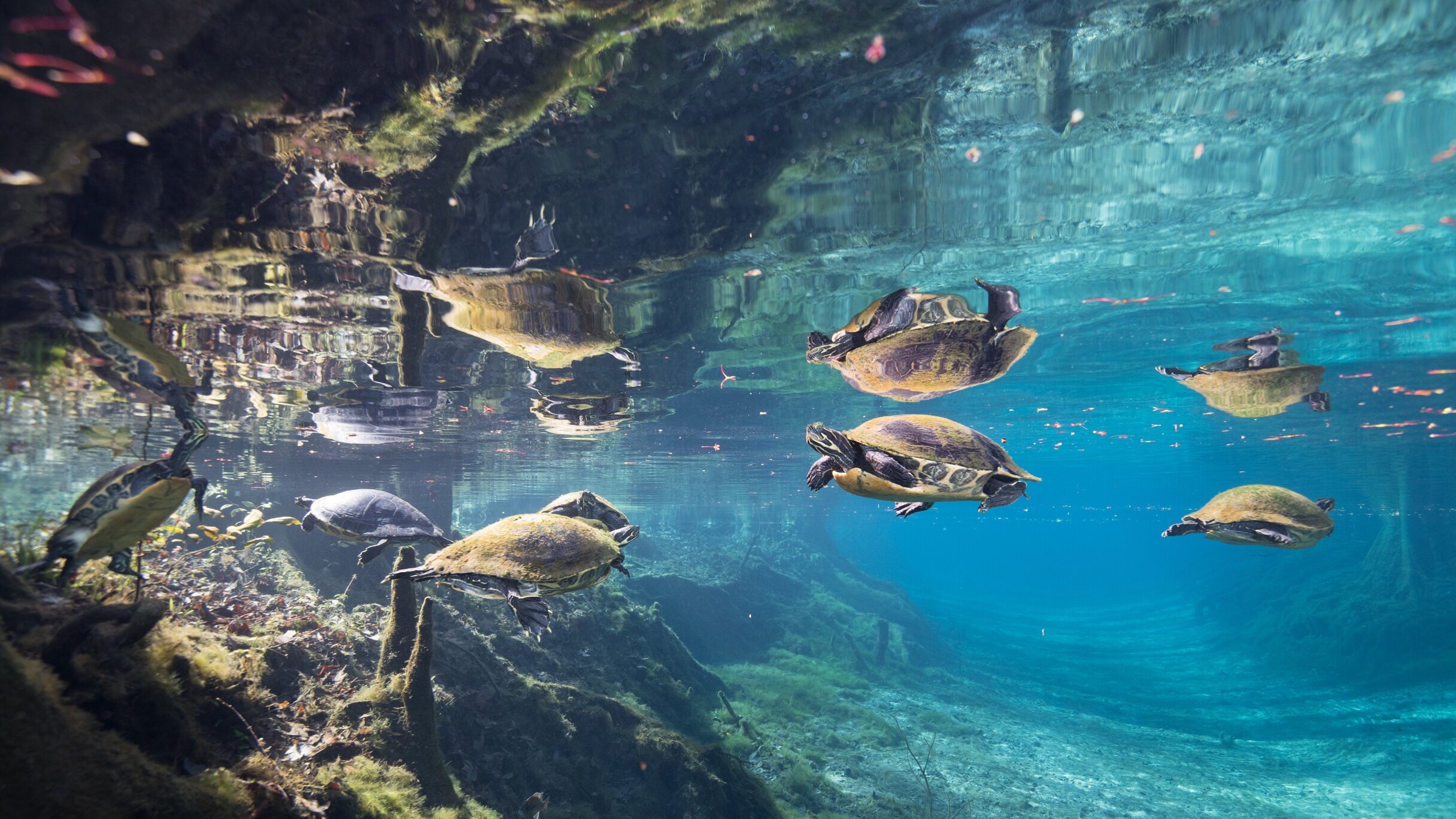Santa Fe River Turtle Project
The Turtle Conservancy has developed a new partnership with the Santa Fe River Turtle Project (SFRTP) in northern Florida. This new partnership will allow TC supporters to directly donate to the SFRTP, ensuring that they have the supplies necessary to sustain their long-term research and conservation work year after year.
The SFRTP is a collaborative effort by scientists, students, and citizens to learn about the turtles inhabiting the Santa Fe River and to promote conservation of the entire Santa Fe River ecosystem. Since 2004 the project has examined, measured, marked, and released more than 10,000 turtles. Over 250 students and citizens have participated in this project during the past 18 years.










